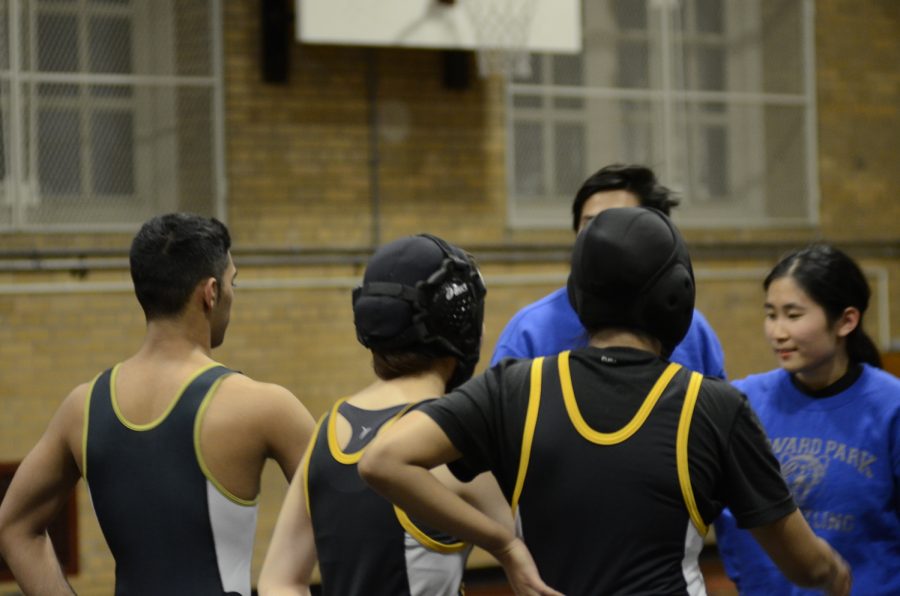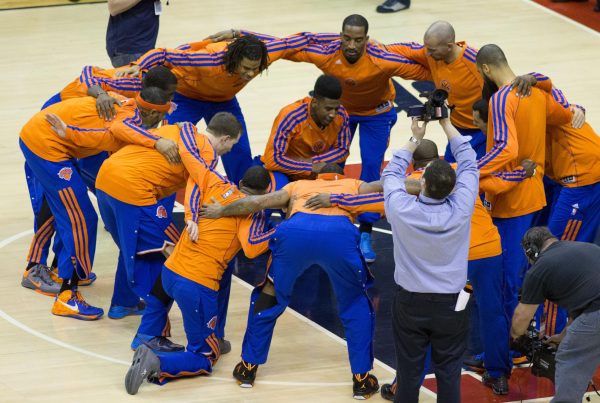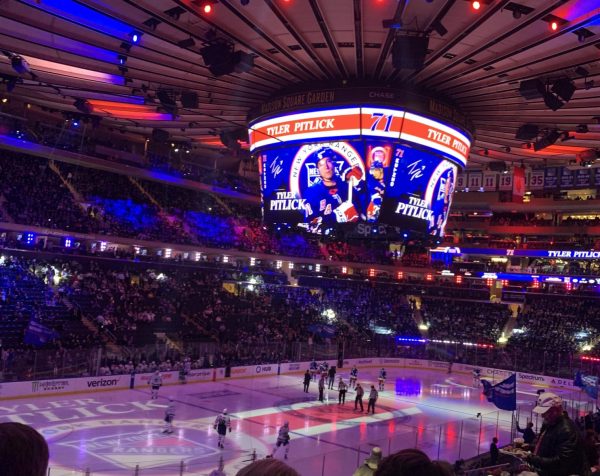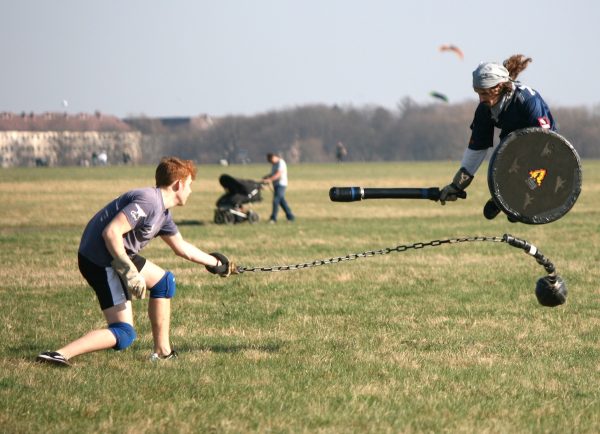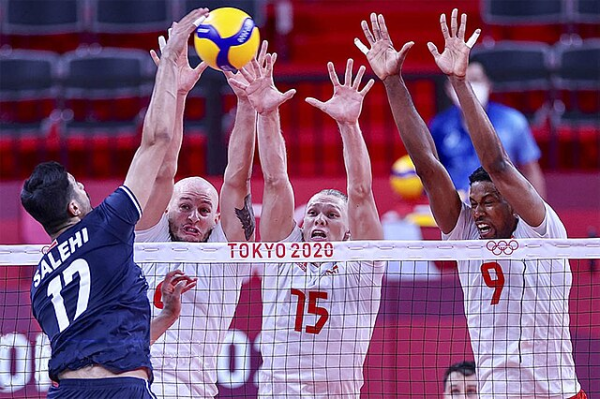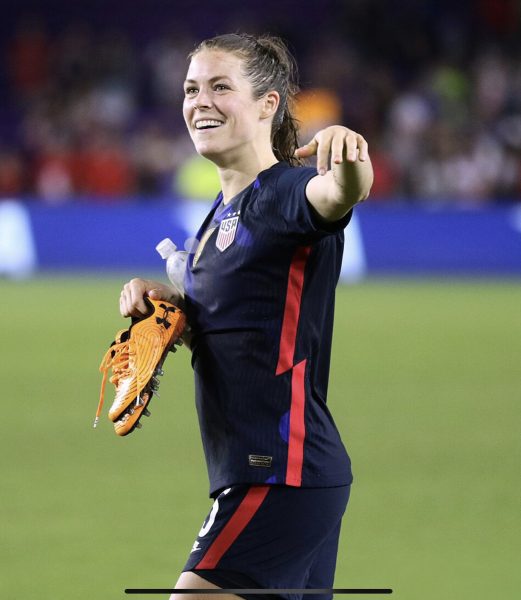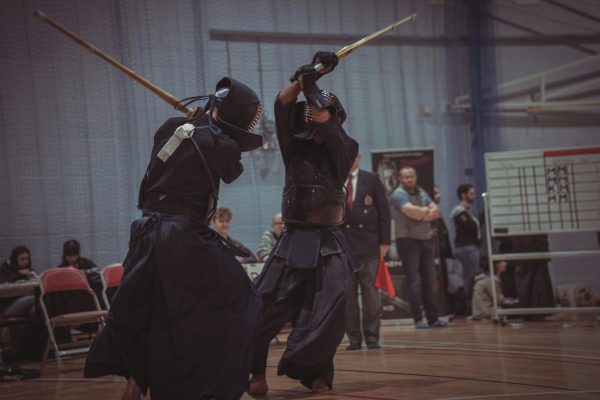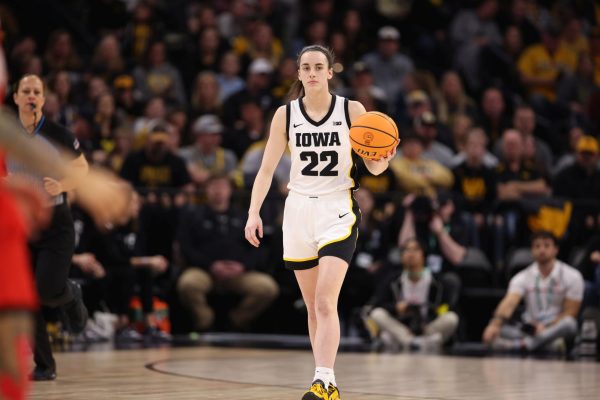Skull Cap to No Cap
PSAL Wrestling Revises Rule Regarding Skull Caps Under Headgear
A view of the skull caps on co-ed wrestling captains Lyn Kajihara ’19 and Zainab Mridha ’19.
It’s early morning on a Saturday and you are surrounded by large circled mats as the sound of whistles, voices and screams fill the gym. You’re on deck. The match before yours is about to finish and as you rush to put on your headgear you realize, you’ve forgotten your skullcap! And then…you realize that it is no longer a problem.
Until very recently, PSAL required all female and male wrestlers with hair exceeding shoulder length to wear a skullcap under their headgear before being permitted to wrestle. “Hair that is braided or dreadlocked may not extend below the forehead or earlobe,” as was stated in the National Association of State High School Associations rule book. The skullcap consists of a stretchy material that covers the entire head, and is often connected to the headgear through straps. If wrestlers did not have their skullcaps on, they would be disqualified from the match. “I already feel nervous about the match, and struggling with the skullcap and the headgear before walking up to the mat is really stressful,” Maya Giardina ’20 a member of the Girls’ Varsity wrestling team said.
While the PSAL enforced these rules for the safety of its athletes, there were heavy downsides to this supposedly ‘helpful’ piece of equipment. “It’s really uncomfortable at times, and it sometimes feels like it’s choking me,” Rachel Chen ’20, another member of the Girls’ Varsity Wrestling team commented. Some girls also felt that it was unfair they were unable to wrestle without a skullcap. “While I understand the PSAL meant it as a precaution for people pulling on their opponents hair, wrestlers understand this consequence when they enter the sport, so I feel as though we should be able to choose between whether we choose to use the skullcap or not,” Chen said. Chen’s opinions seemed to have been in agreement with many wrestlers across the state, as an incident at a New Jersey High School sparked a controversy that eventually led to the removal of this rule.
“While I understand the PSAL meant it as a precaution for people pulling on their opponents hair, wrestlers understand this consequence when they enter the sport, so I feel as though we should be able to choose between whether we choose to use the skullcap or not,” said Chen ’20
On December 19th, 2018, Andrew Johnson was an athlete competing in a local tournament when he was stopped by a referee due to a violation of the skullcap rule. Johnson had dreadlocks which were not covered by his skullcap, which was then considered a violation. He was given a choice: he could cut his dreadlocks, or forfeit the match. Being the dedicated wrestler that he was, he decided to cut his dreadlocks, and continue with the match. But the aftermath of this incident sparked nationwide outrage, as many were upset at the way the situation was handled. As a result, the skullcap was ruled unnecessary and leaving it up to the wrestlers to choose to wear it or not.
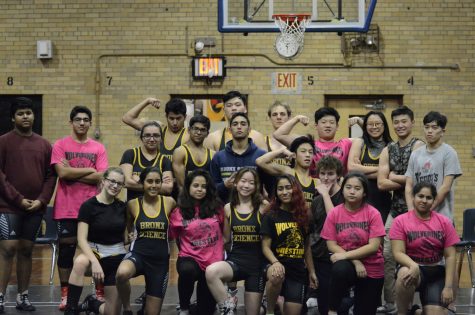
The Bronx Science co-ed wrestling team poses for a team photo in January 2019, back when the skullcap was still required for all wrestlers with hair longer than the nape of the neck.
The revision of this rule was happy news for many, especially for the girls in the sport. “Being able to wrestle without a skullcap feels like a relief, because I felt it was unnecessary in keeping my hair back,” Susan Xiao ’21 said. Xiao is an athlete on the Bronx Science Girls’ Varsity Wrestling team, and her relief in being able to throw away her headpiece is joined by the male athletes on the co-ed team as well. Joseph Zeltsan ’20, a member of the co-ed team, recalls when he had to cut his hair the day before a tournament, as he did not possess a skullcap and did not have time to buy one. “The fact that I couldn’t just tie it up under my headgear was frustrating, so I’m really happy that I don’t have to wear a skullcap, even if I have long hair,” Zeltsan said.
Lyn Kajihara is the Managing Editor for ‘The Observatory’ and a Staff Reporter for ‘The Science Survey.’ Journalistic writing appeals to her because...
Andrew Zhang is a Staff Reporter for 'The Science Survey.' Andrew finds that journalistic writing is important in today's society, as it is plagued with...

